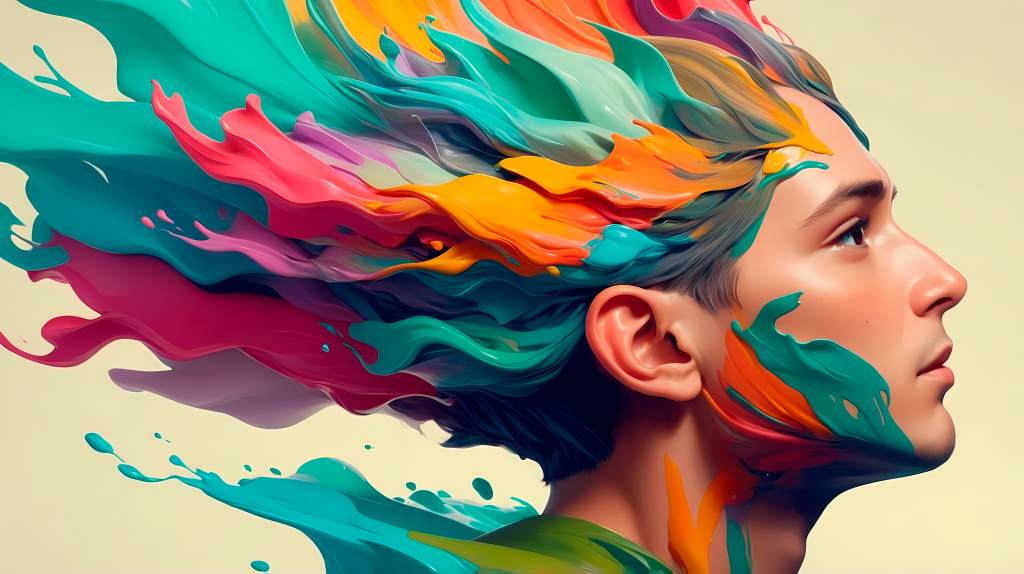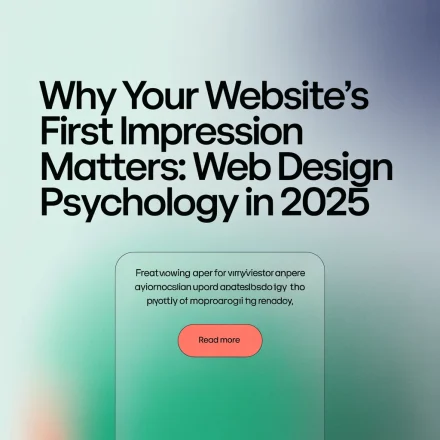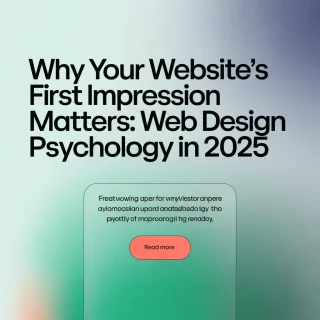
Ever wonder why Facebook is blue, Target is red, or Whole Foods is green? These color choices aren’t random—they’re strategic decisions based on the psychology of color and how it influences our perceptions, emotions, and behaviors.
When it comes to your website, color choices go far beyond aesthetics. The right color palette can dramatically impact how visitors feel about your brand, how long they stay on your site, and even whether they convert into customers. Let’s dive into how color psychology works and how you can harness its power to create a more effective website.
The Science Behind Color Psychology
Color psychology isn’t just marketing fluff—it’s backed by science. When we see colors, our brains release different chemicals that can affect our mood and behavior. These reactions happen almost instantly and often subconsciously, making color one of the most powerful nonverbal communication tools at your disposal.
For websites, this means color choices can:
- Evoke specific emotions and associations
- Influence perceived waiting time and user patience
- Guide attention to important elements
- Affect readability and user experience
- Build brand recognition and trust
What makes color psychology particularly fascinating is how universal some reactions are while others vary wildly based on personal experience, cultural background, and context.
The Emotional Impact of Common Colors
Let’s break down how different colors typically affect website visitors:
Blue: Trust, Calm, and Security
Blue is the world’s favorite color and dominates the corporate web landscape. It creates feelings of trust, reliability, and professionalism—which is why you’ll see it on banking websites, healthcare providers, and social media platforms that handle personal data.
Facebook, PayPal, and LinkedIn all leverage blue to communicate trustworthiness. For service-based businesses, blue can reassure potential clients that you’re dependable and established.
Red: Urgency, Excitement, and Passion
Red increases heart rate and creates a sense of urgency, making it perfect for clearance sales, limited-time offers, and primary call-to-action buttons. It’s attention-grabbing and energetic but should be used sparingly as it can be overwhelming in large doses.
Netflix, YouTube, and Target all use red to create excitement and draw attention. For e-commerce sites, strategic pops of red can drive conversions by creating buying urgency.
Green: Growth, Health, and Wealth
Green has strong associations with nature, health, and prosperity. It’s calming like blue but with added associations of growth and renewal. This makes it excellent for environmental brands, financial services, and health-focused businesses.
Whole Foods, TripAdvisor, and Spotify all use green effectively in their branding. Green call-to-action buttons often perform well as they imply forward movement and positive action.

Yellow: Optimism, Clarity, and Warmth
Yellow captures attention and conveys optimism and energy. It’s the most visible color from a distance, which is why it’s used for warning signs and taxi cabs. On websites, yellow can create a sense of happiness and warmth but should be used judiciously as it can strain eyes when overused.
Brands like Best Buy, IKEA, and Nikon use yellow to appear friendly and accessible. Yellow accents can be particularly effective for highlighting important information or creating a cheerful atmosphere.
Orange: Enthusiasm, Creativity, and Affordability
Orange combines the energy of red with the cheerfulness of yellow, creating a sense of enthusiasm and creativity. It’s often associated with affordability and value, making it popular for brands that want to appear accessible rather than exclusive.
Companies like Nickelodeon, Fanta, and Amazon use orange to create a sense of fun and approachability. For websites targeting younger audiences or creative industries, orange can communicate innovation and excitement.
Purple: Luxury, Wisdom, and Creativity
Historically associated with royalty (due to the high cost of purple dye), purple continues to convey luxury, wisdom, and creativity. It’s less common than other colors, which can help your brand stand out.
Brands like Hallmark, Yahoo, and Cadbury use purple to distinguish themselves. For premium products or services, purple can help justify higher price points by implying quality and exclusivity.
Cultural Considerations in Color Psychology
While some color associations are relatively universal, many vary significantly across cultures:
- White represents purity and cleanliness in Western cultures but symbolizes mourning in many Asian countries.
- Red signifies luck and prosperity in China but can represent danger or debt in other contexts.
- Yellow is associated with cowardice in the US but represents courage in Japan.
If your website targets an international audience, research color associations in your target markets. What works brilliantly in one culture might send the wrong message in another.

Strategic Color Implementation for Your Website
Knowing color psychology principles is just the start—implementing them effectively requires strategy:
Color Hierarchy and Visual Flow
Use your primary brand color for the most important elements, secondary colors for supporting information, and accent colors sparingly for calls to action. This creates a natural visual hierarchy that guides visitors through your content.
For example, a blue-based website might use:
- Dark blue for headers and primary navigation
- Medium blue for important content sections
- Light blue for backgrounds and secondary elements
- Orange (blue’s complementary color) for call-to-action buttons
The 60-30-10 Rule
A balanced color scheme typically follows the 60-30-10 rule:
- 60% primary color (often a neutral or less saturated color)
- 30% secondary color to support the main color
- 10% accent color for emphasis and calls to action
This distribution creates visual interest without overwhelming visitors.
Color and Conversion Optimization
The right colors can dramatically impact conversion rates:
- High-contrast call-to-action buttons typically outperform low-contrast options
- Button colors that stand out from your site’s main palette draw more attention
- Gender preferences matter—studies show men prefer blue, black, and green, while women often prefer blue, purple, and green
At Engage Ascend Creative, we’ve seen conversion improvements of 15-40% simply by optimizing color schemes for better psychological impact and visual hierarchy.
Accessibility: The Often Forgotten Element
When discussing color psychology, we must address accessibility. About 8% of men and 0.5% of women experience color vision deficiency, which affects how they perceive your website.
Best practices include:
- Never rely solely on color to convey important information
- Maintain a contrast ratio of at least 4.5:1 for text
- Use patterns or textures in addition to colors for charts and graphs
- Test your site with color blindness simulators
Accessible design isn’t just ethically sound—it’s good business, ensuring your message reaches everyone in your audience.

Real-World Application: A Case Study
One of our clients, a local financial advisor, came to us with a website that wasn’t converting visitors to consultation requests. Their site used a dark green and gold palette—colors traditionally associated with wealth and stability.
However, our analysis showed these particular shades created low contrast and poor readability. Additionally, their call-to-action buttons blended into the background rather than standing out.
We redesigned their site with:
- A cleaner navy blue primary color (maintaining trust associations)
- White space for improved readability
- Strategic orange call-to-action buttons that contrasted with the blue
- Subtle green accents to maintain brand continuity
The results? A 32% increase in consultation requests and a 45% increase in time spent on site within just two months.
Implementing Color Psychology on Your Website
Ready to harness the power of color psychology? Here’s how to get started:
- Audit your current color scheme – Does it align with your brand values and desired emotional response?
- Consider your audience – Different demographics respond differently to colors. Research your specific audience.
- Test different options – A/B testing can reveal which colors resonate best with your visitors.
- Maintain consistency – Once you’ve established an effective color palette, use it consistently across your website and marketing materials.
- Don’t overdo it – Limit your palette to 3-5 colors to avoid visual confusion.
- Prioritize function over personal preference – Your favorite color might not be the best choice for your business goals.
Common Color Mistakes to Avoid
Even with the best intentions, these common mistakes can undermine your color strategy:
- Using too many colors – This creates visual noise and confusion
- Poor contrast – Makes content difficult to read and navigate
- Trendy colors without purpose – Choose colors for psychology and brand alignment, not just because they’re popular
- Ignoring industry expectations – Sometimes bucking trends works, but certain color associations are deeply ingrained
The Bottom Line: Colors Matter
Your website’s color scheme isn’t just decorative—it’s a powerful communication tool that influences how visitors perceive, interact with, and remember your brand. By understanding and strategically applying color psychology principles, you can create a more engaging, effective, and memorable online presence.
At Engage Ascend Creative, we combine color psychology expertise with conversion-focused design to create websites that don’t just look good—they perform. If you’re ready to harness the power of color psychology for your website, let’s talk about how we can help your business ascend to new heights.
Remember: in the digital world, color isn’t just what people see—it’s what they feel. Make sure your website colors are sending the right message.






Leave a Comment